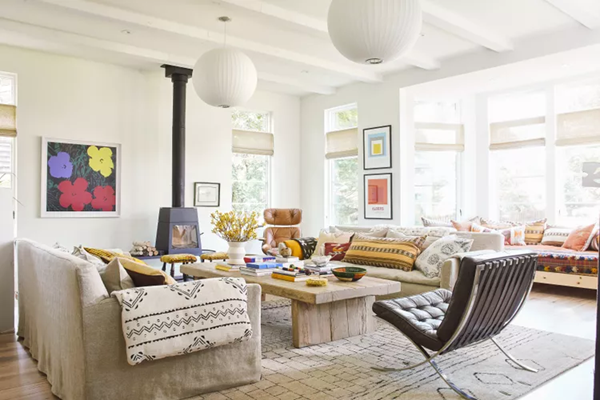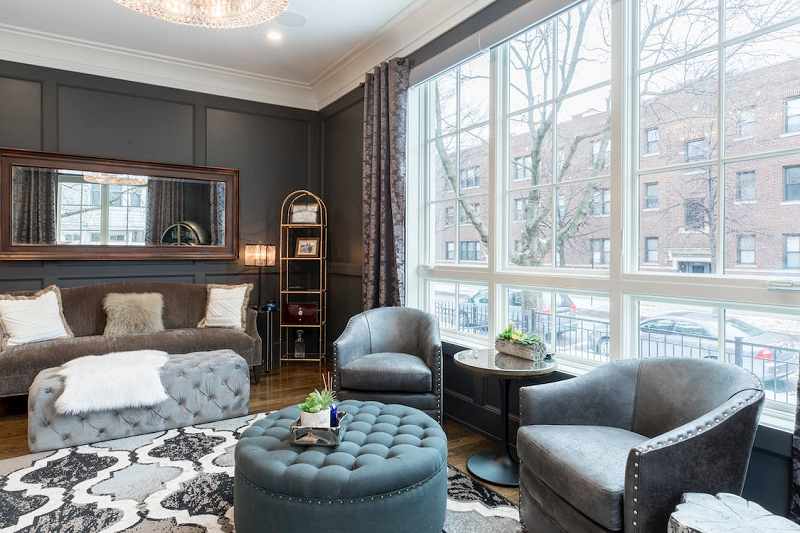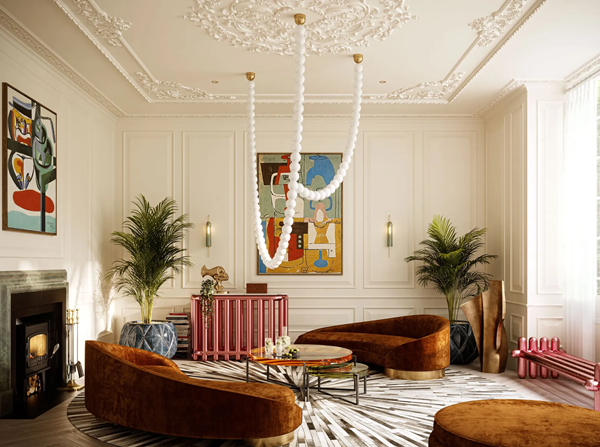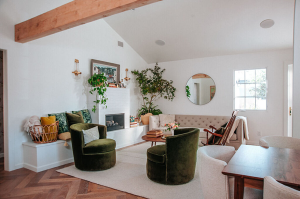Creating a harmonious and balanced home interior can be a daunting task. From selecting the right colors to choosing furniture and accessories, the options can feel overwhelming. That’s where the 60-30-10 design rule comes in – it’s a simple and effective guideline for achieving a well-designed and visually appealing space.
Whether you’re decorating a new home or simply looking to refresh your existing decor, the 60-30-10 rule can help you create a cohesive and balanced design. By understanding the elements of this rule and how to apply them, you can achieve a space that is both visually pleasing and functional. So let’s dive in and explore how the 60-30-10 design rule can transform your home into a space that you’ll love spending time in.
Table of Content:
What’s The 60-30-10 Design Rule?
Benefits of Using the 60-30-10 Design Rule
How To Apply the 60-30-10 Design Rule
Examples On How To Apply The 60-30-10 Rule
How To Apply The 60 Percent Rule
How To Apply The 30 Percent Rule
How To Apply The 10 Percent Rule
FAQ’S
What’s The 60-30-10 Design Rule?
The 60-30-10 rule is a basic principle of design that involves breaking down the colors used in a room into three main categories: dominant, secondary, and accent. The dominant color should make up 60% of the room’s color scheme, while the secondary color should make up 30% and the accent color should make up the remaining 10%.
The dominant color is the main color that is used throughout the room, such as on the walls, large furniture pieces, or flooring. It sets the overall tone and mood of the space, so it’s important to choose a color that you love and that fits the style you’re going for.
The secondary color is used to complement the dominant color and create depth and interest. This can be achieved through textiles, such as curtains, pillows, or rugs, or through smaller furniture pieces like armchairs or side tables.
Finally, the accent color is used to add a pop of color and visual interest to the space. This can be achieved through smaller decor items like vases, picture frames, or throw blankets.
By following this rule, you can ensure that the colors in your home/room are harmonious and balanced, rather than overwhelming or chaotic. The rule can be applied to everything from wall colors and furniture upholstery to decorative accents like throw pillows and artwork.
Benefits of Using the 60-30-10 Design Rule
One of the biggest benefits of using the 60-30-10 rule for home decor is that it provides a simple and effective framework for creating a cohesive color scheme in a room. By sticking to this rule, homeowners can ensure that their decor choices are balanced and visually appealing, rather than clashing or overwhelming.
Additionally, using the 60-30-10 rule can help make decorating decisions easier and less stressful, since it provides a clear guideline for how much of each color to use. Finally, following this rule can make a room feel more sophisticated and polished, as it creates a sense of harmony and balance that is pleasing to the eye.
If you are looking for a way to style your space with wall art without breaking your piggy bank, then I recommend reading “10 Surprising Benefits of Printable Wall Art”
How To Apply the 60-30-10 Design Rule
When applying the 60-30-10 rule, it’s important to choose colors that work well together and fit the style and mood you’re going for. Here are some tips for successfully applying the rule in your home decor:
Start with your dominant color: Choose a color that you love and that fits the style you’re going for. This color should be used throughout the room in larger pieces like walls, flooring, or furniture.
Add your secondary color: Choose a color that complements the dominant color and creates depth and interest. This can be achieved through textiles, smaller furniture pieces, or even a feature wall.
Finish with your accent color: Choose a color that adds a pop of visual interest to the space. This can be achieved through smaller decor items like vases, picture frames, or throw blankets.
When applying the 60-30-10 rule, it’s important to keep in mind that balance and proportion are key. If one color dominates the space too much, it can create an unbalanced and overwhelming look. Similarly, if the accent color is used too much, it can lose its impact and become distracting.
The 60%
The walls, sofa, large furniture pieces, and rug
The 30%
Smaller furniture pieces, armchairs, and curtains
The 10%
Artwork, decorative accessories, throw pillows/blankets, and patterned fabrics
Here Are Some Examples On How To Apply The 60-30-10 Rule
The 60-30-10 rule can also be applied to decorating your home or workspace. Here are a few examples:
For a modern living room, choose a dominant color of white (60%) and add a secondary color of grey (30%) with an accent color of black (10%) for a sleek and minimalist look.
For a cozy bedroom, choose a dominant color of beige (60%), a secondary color of light blue (30%), and an accent color of pink (10%) for a relaxing and serene ambiance.
For a vibrant kitchen, choose a dominant color of yellow (60%), a secondary color of white (30%), and an accent color of green (10%) for a cheerful and refreshing space.
For a sophisticated home office, choose a dominant color of navy blue (60%), a secondary color of grey (30%), and an accent color of gold (10%) for a luxurious and inspiring environment.
These are just a few examples of how you can use the 60-30-10 rule to decorate your home or workspace. By following this simple design principle, you can create a cohesive and balanced space that reflects your personal style and enhances your daily life.
How To Apply The 60 Percent Rule
The 60% in the 60-30-10 design rule typically refers to the dominant color or element in a space. This is the color or element that covers the majority of the room and sets the overall tone for the space.
For example, in a living room, the 60% might be the wall color, the flooring, or the largest piece of furniture such as the sofa. This dominant element creates a sense of cohesion and anchors the room.
In a bedroom, the 60% might be the bedding, the wall color, or the flooring. This dominant element creates a soothing and inviting atmosphere.
In a kitchen, the 60% might be the cabinets, the backsplash, or the flooring. This dominant element sets the tone for the entire space and can be used to create a cohesive design.
By using the 60-30-10 design rule, you can create a balanced and visually appealing space that reflects your personal style and enhances your daily life
How To Apply The 30 Percent Rule
The 30% in the 60-30-10 design rule typically refers to the secondary color or element in a space. This is the color or element that supports the dominant color or element and adds depth and visual interest to the space.
For example, in a living room, the 30% might be the curtains, the accent chairs, or the throw pillows. This secondary element complements the dominant element and adds visual interest to the room.
In a bedroom, the 30% might be the headboard, the curtains, or the bedside table. This secondary element adds texture and depth to the space and can be used to create a cohesive design.
In a kitchen, the 30% might be the countertop, the kitchen backsplash, or the small appliances. This secondary element adds contrast and interest to the space and can be used to create a cohesive design.
By using the 60-30-10 design rule, you can create a visually balanced and harmonious space that reflects your personal style and enhances your daily life.
Most Popular Post:
10 Surprising Benefits of Printable Wall Art
15 Must-Have Accessories For Styling A Coffee Table
How to Choose the Perfect Interior Color Scheme for Your Home
Expert Guide On How To Buy A Rug For Each Room
How To Apply The 10 Percent Rule
The 10% in the 60-30-10 design rule typically refers to the accent color or element in a space. This is the color or element that adds a pop of visual interest and creates a focal point in the room.
For example, in a living room, the 10% might be a brightly colored throw pillow, a piece of artwork, or a decorative vase. This accent element adds a touch of personality and visual interest to the space.
In a bedroom, the 10% might be a patterned throw pillow, a colorful lampshade, or a decorative object on the dresser. This accent element adds a playful touch and creates a focal point in the room.
In a kitchen, the 10% might be a colorful set of dishes, a unique light fixture, or a decorative clock on the wall. This accent element adds a touch of personality and creates a focal point in the space.
By using the 60-30-10 design rule, you can create a visually balanced and harmonious space that reflects your personal style and enhances your daily life. The accent element adds a pop of visual interest and creates a focal point in the room, while the dominant and secondary elements create a cohesive and balanced design.
In conclusion, the 60-30-10 rule is a simple yet effective guideline for creating a well-balanced and visually appealing color scheme in a room. By using this rule, homeowners can ensure that their decor choices are harmonious and balanced, rather than overwhelming or chaotic. Whether you’re redecorating an entire room or just adding a few decorative accents, following the 60-30-10 rule can make the process easier and less stressful, while also giving your space a more polished and sophisticated look. So why not give it a try and see how it can transform your home decor?
FAQ’S
- Is it okay to use more than three colors in a room? While the 60-30-10 rule is a helpful guideline, it’s important to remember that it’s not a hard and fast rule. If you want to use more than three colors in a room, you certainly can. However, keep in mind that using too many colors can make a space feel cluttered and overwhelming. If you do decide to use more than three colors, try to stick to a similar ratio, such as 50-30-20.
- Can I use different shades of the same color in each category? Absolutely! Using different shades of the same color is a great way to add depth and dimension to a room while still maintaining a cohesive color scheme. For example, you could use a light blue as your dominant color, a navy blue as your secondary color, and a bright turquoise as your accent color.
- Do I have to stick to the 60-30-10 ratio exactly? While the 60-30-10 ratio is a good guideline, it’s important to remember that it’s not set in stone. Depending on the size and style of the room, you may need to adjust the ratio slightly to achieve the desired effect. The key is to keep the overall balance and harmony of the color scheme in mind, rather than focusing too much on the exact percentages.
- How can I incorporate patterned fabrics and textiles into a 60-30-10 color scheme? Patterned fabrics and textiles can be a great way to add visual interest to a room while still sticking to a 60-30-10 color scheme. When choosing patterned pieces, look for those that incorporate the dominant color as well as one or two of the other colors in the scheme. For example, if your dominant color is blue, look for a patterned pillow or rug that includes blue, as well as your secondary and accent colors. This will help tie the patterned piece into the overall color scheme and create a cohesive look.
CATCH THE LATEST IN HOME DECOR TRENDS:

Steal These 15 Expert-Approved Decorating Secrets

How To Accessories Your Living Room

Small Space? 10 Ways To Make A Room Appear Bigger

Make Your space Look Expensive
GET CAUGHT UP ON ALL THE INSPIRING DECOR TIPS:

18 Fresh Decorating Ideas To Update Your Fireplace

How To Create An Art Gallery Wall

